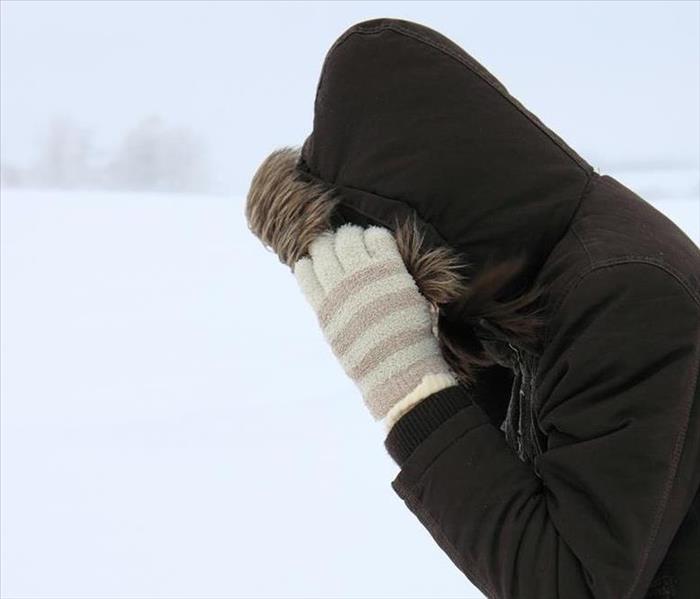Winter Storms Pose Frostbite Risk
10/11/2019 (Permalink)
Winter storms can get pretty intense and can be very dangerous if proper precautions aren't taken ahead of time. Freezing temperatures put people at risk for developing frostbite which if left untreated, can become deadly. So, what do you do if you or someone you know experiences what you think to be frostbite this winter?
What to do for frostbite:
1. Move the person to a warm place
2. Handle the area gently; never rub the affected area
3. Warm gently by soaking the affected area in warm water (100–105 degrees F) until it appears red and feels warm
4. Loosely bandage the area with dry, sterile dressings
5. If the person’s fingers or toes are frostbitten, place dry, sterile gauze between them to keep them separated
6. Avoid breaking any blisters
7. Do not allow the affected area to refreeze
8. Seek professional medical care as soon as possible
Hypothermia
Hypothermia is the cooling of the body caused by the failure of the body’s warming system. The goals of first aid are to restore normal body temperature and to care for any conditions while waiting for EMS personnel.
Signs of hypothermia:
- Shivering
- Numbness or weakness
- Glassy stare
- Apathy or impaired judgment
- Loss of consciousness
What to do for hypothermia:
1. CALL 9-1-1 or the local emergency number
2. Gently move the person to a warm place
3. Monitor breathing and circulation
4. Give rescue breathing and CPR if needed
5. Remove any wet clothing and dry the person
6. Warm the person slowly by wrapping in blankets or by putting dry clothing on the person.
- Hot water bottles and chemical hot packs may be used when first wrapped in a towel or blanket before applying. Do not warm the person too quickly, such as by immersing him or her in warm water.
- Warm the core first (trunk, abdomen), not the extremities (hands, feet).
We hope you never have to experience either frostbite or hypothermia this winter. However, if you do, we hope you are more prepared on how to handle the situation safely.



 24/7 Emergency Service
24/7 Emergency Service
